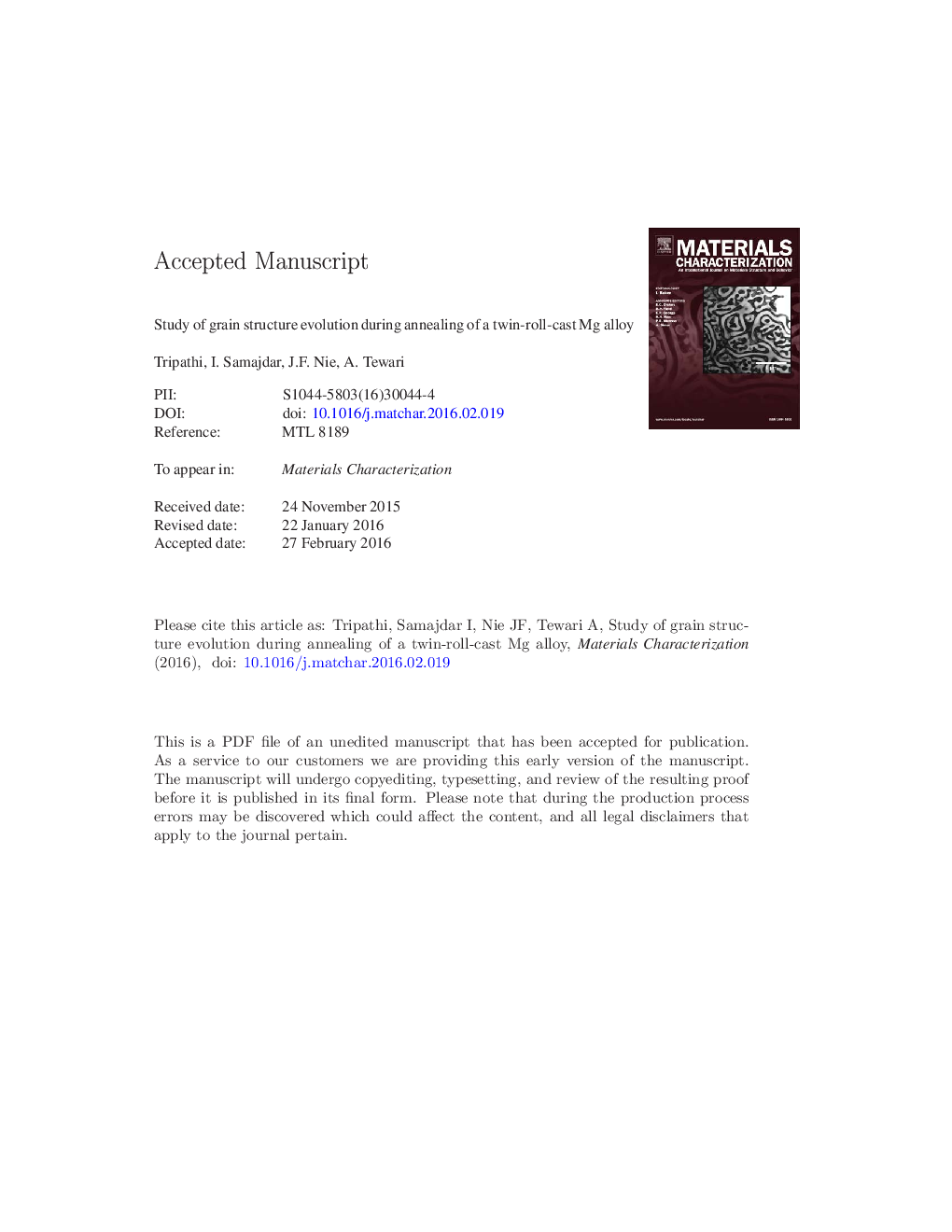| Article ID | Journal | Published Year | Pages | File Type |
|---|---|---|---|---|
| 7969858 | Materials Characterization | 2016 | 32 Pages |
Abstract
The evolution of microstructure under static annealing was studied for mid-thickness section of a twin-roll-cast (TRC) magnesium alloy. Annealing was performed at 300 °C and 500 °C for different times. Microstructural evolution was quantitatively analyzed, from optical micrographs, using grain path envelope analysis. Additional information from electron backscatter diffraction (EBSD) was used for addressing the possible mechanism(s). It was found that the TRC structure had a bimodal grain size, which was preserved even after annealing at 300 °C. However, the annealing at 500 °C led to a unimodal grain size. This difference in the grain size distribution created a contrasting behavior in the normalized standard deviations. This was primarily attributed to a competition between recovery and recrystallization, and their respective dominance at 300° and 500 °C. A deformation induced recrystallization recovery (DIRR) model was proposed. The proposed model could successfully address the experimental microstructural evolution.
Keywords
Related Topics
Physical Sciences and Engineering
Materials Science
Materials Science (General)
Authors
A. Tripathi, I. Samajdar, J.F. Nie, A. Tewari,
